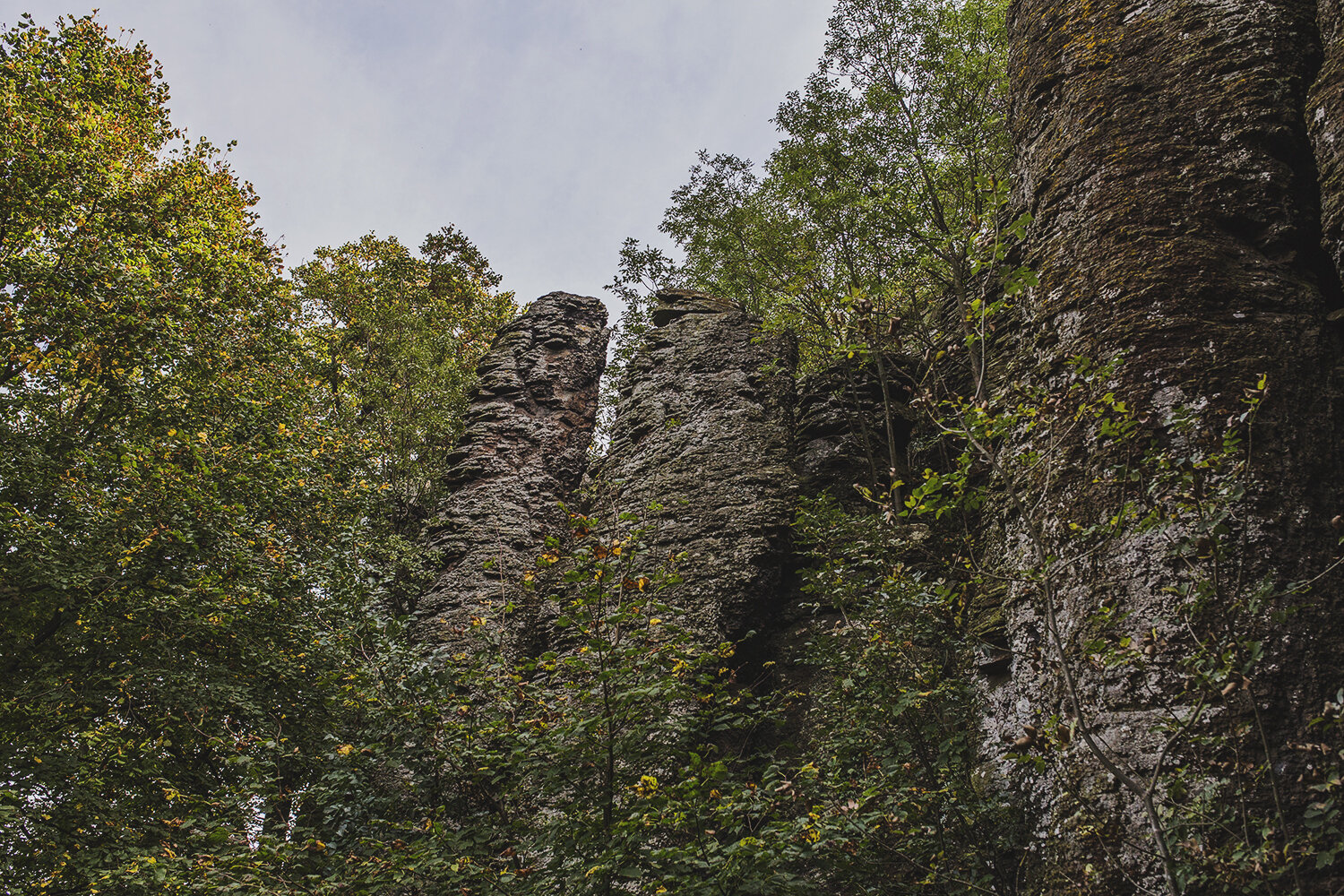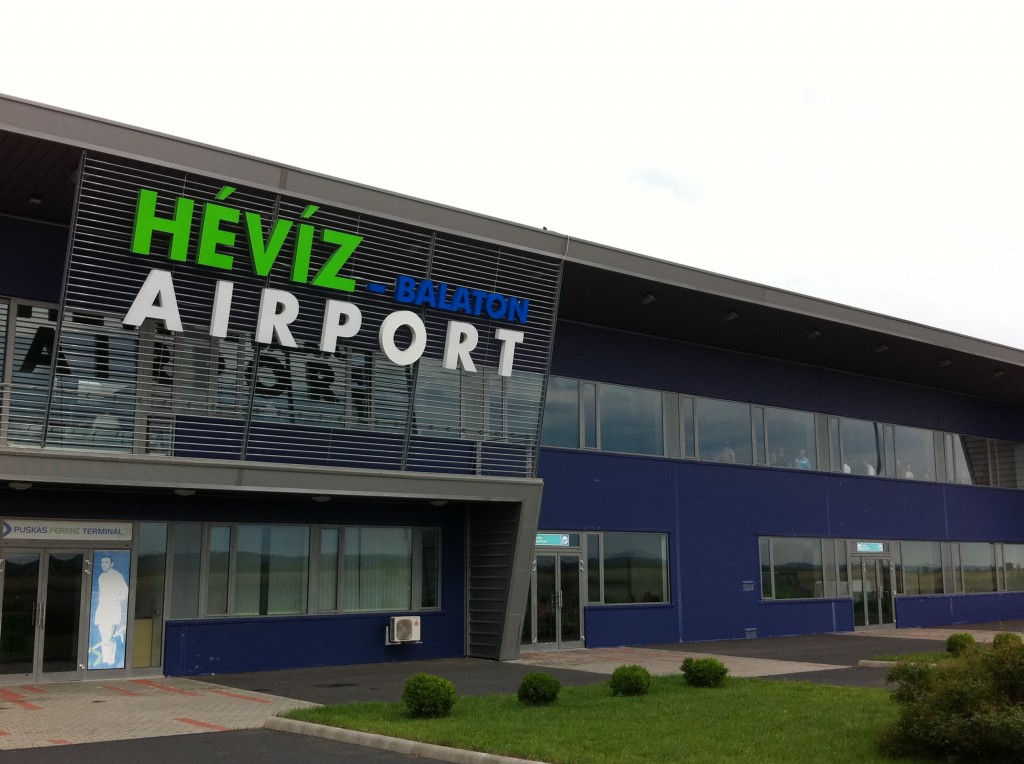The Szent György Hill Basalt Organs Study Trail is an almost four kilometers long, circular route with seven stops. It starts from the former mine yard of Raposka (GPS: 46.843264, 17.442190) and its first informational sign tells us the history of the 415 meters high hill. According to it, the hill was shaped by a volcanic activity of multiple eruptions about 3-4 million years ago. The porous rocks we can see along the trail were formed when gases and steams got stuck in the lava.
The flood basalt covered the hundreds of meters thick layers of clay and sand that were formed within the Pannon Sea. After the volcanic activity stopped, the water, the sun, and the wind carved the then much higher surface to its current shape.
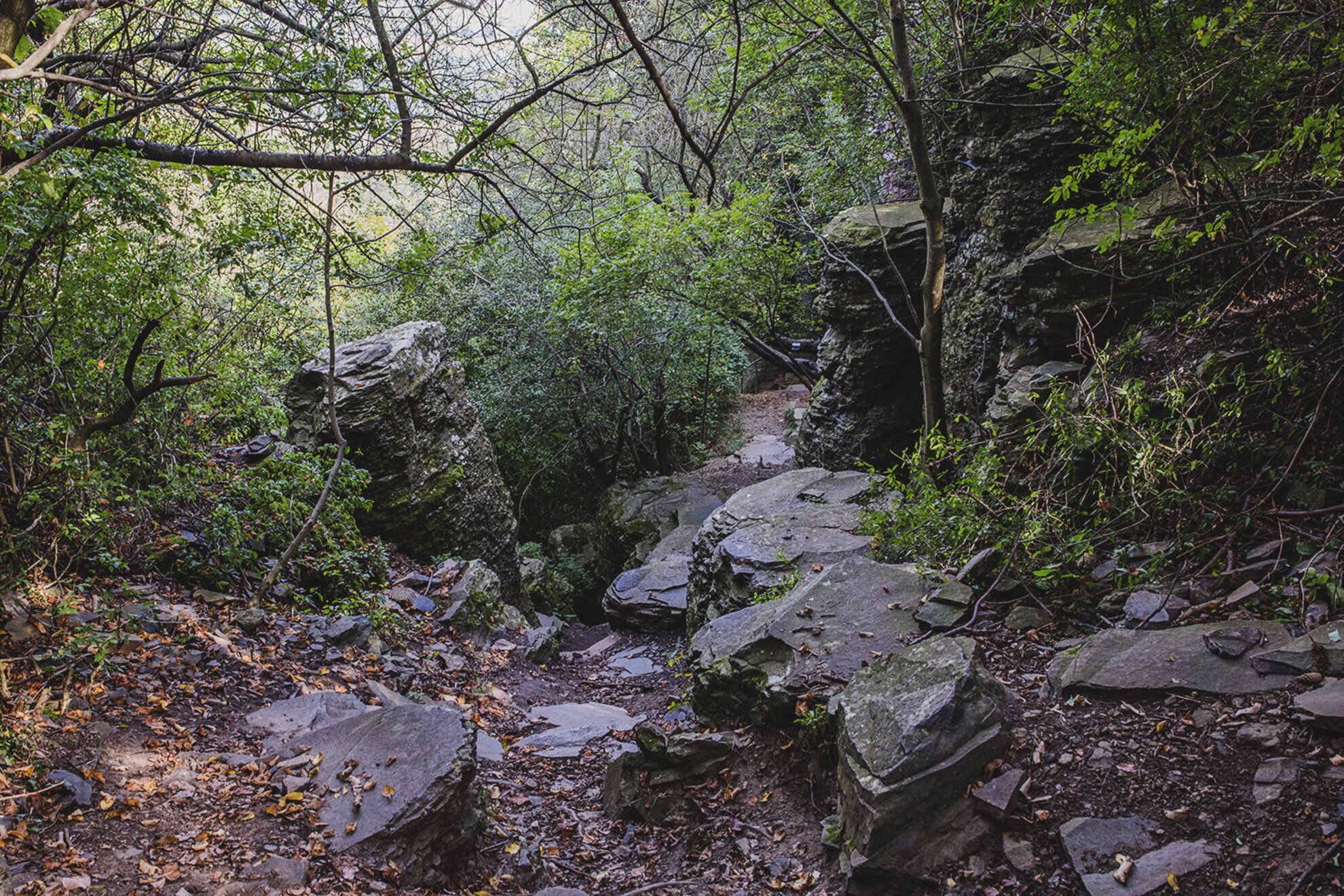
However, the hard volcanic rocks resisted these external forces, and kept their original height, showing us today what the surface was like then. This is why these basalt mountains are called buttes, as they are the reminders of a former state of the surface.
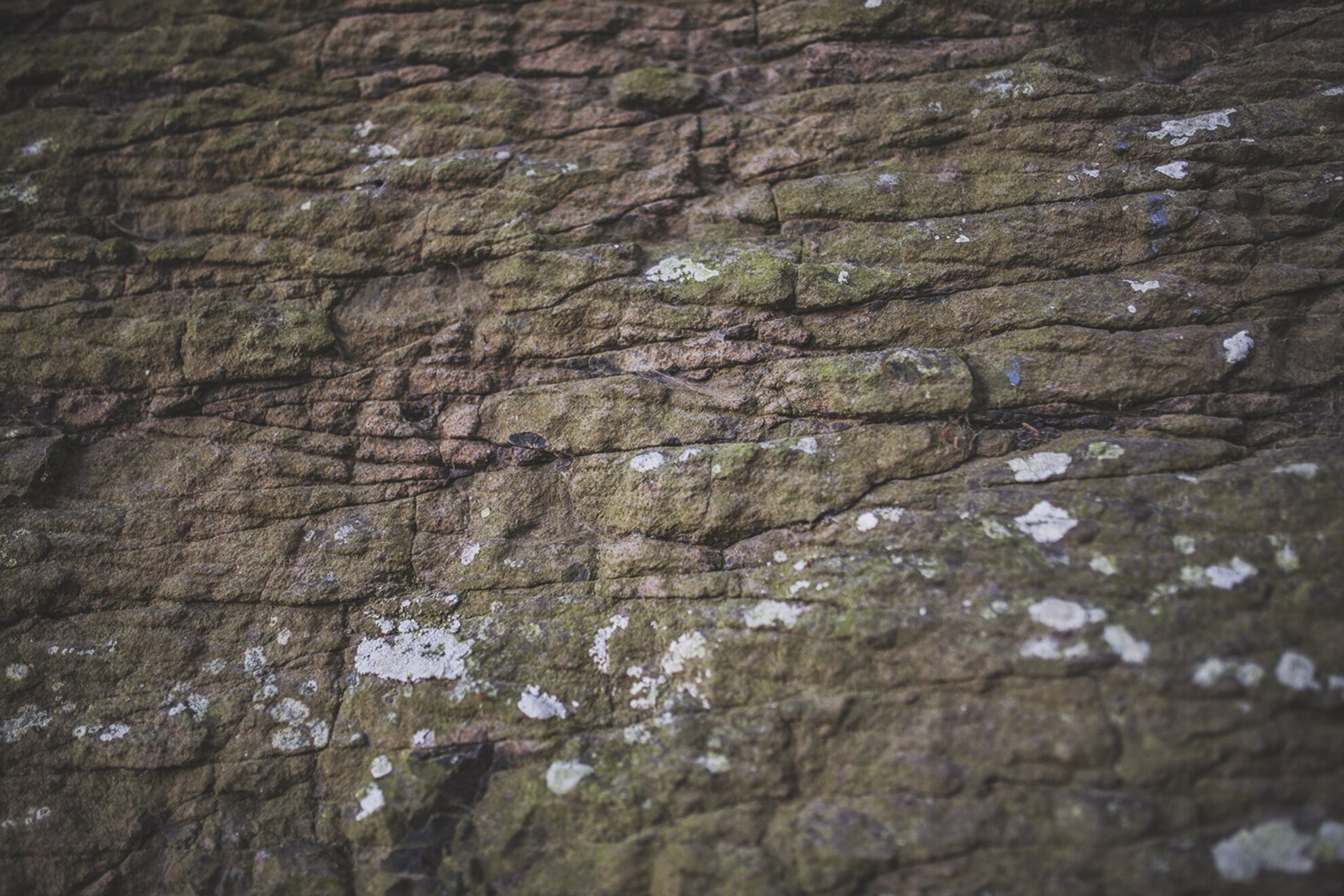
The basalt organs were formed from the hot lava; the rapid cooling of the lava causes fractions, creating polygonal columns, which later were shaped by the weather.
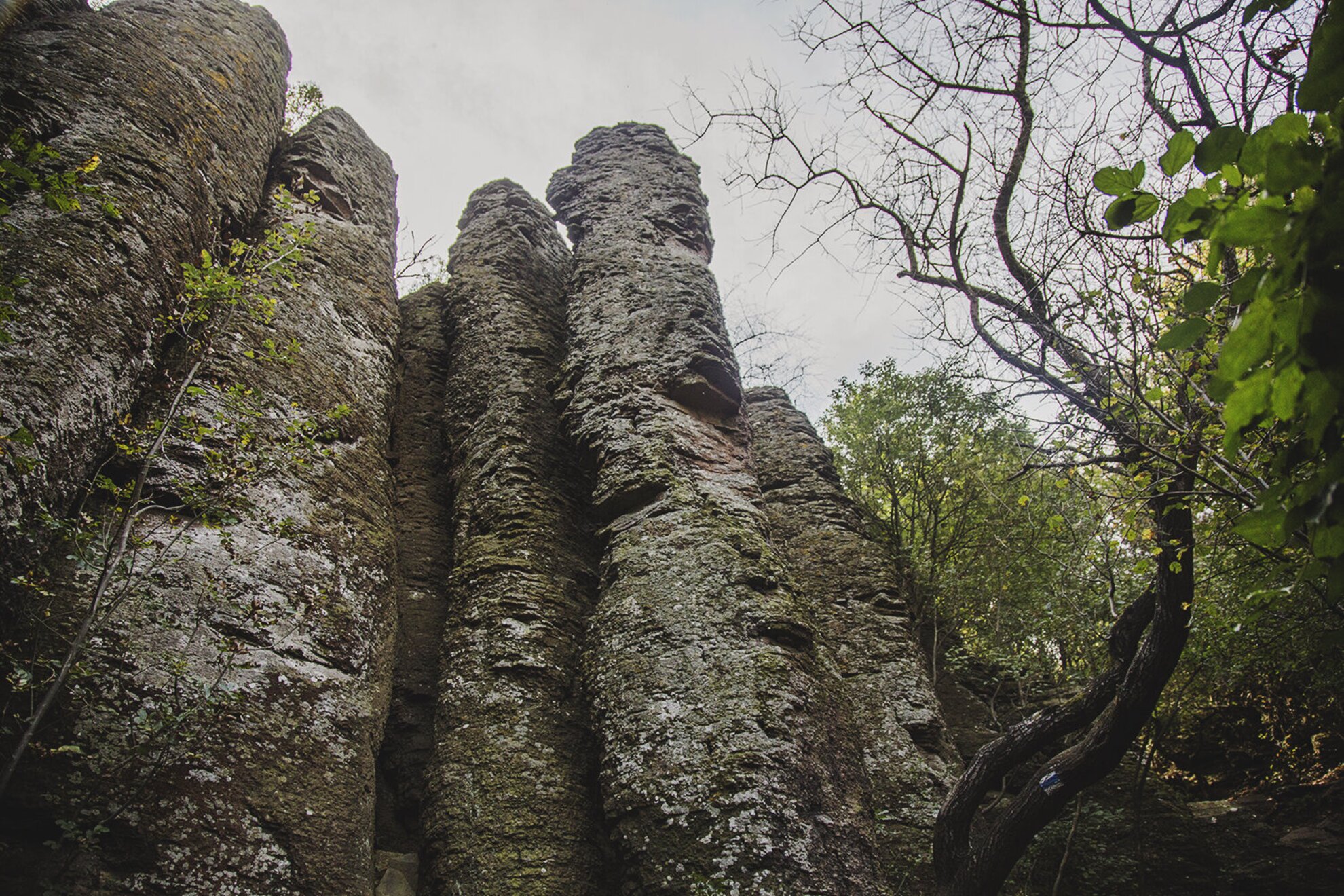
Basalt organs were also called “stone bags” or “cotton bags”, and on Szent György Hill their height often reaches 30-40 meters.
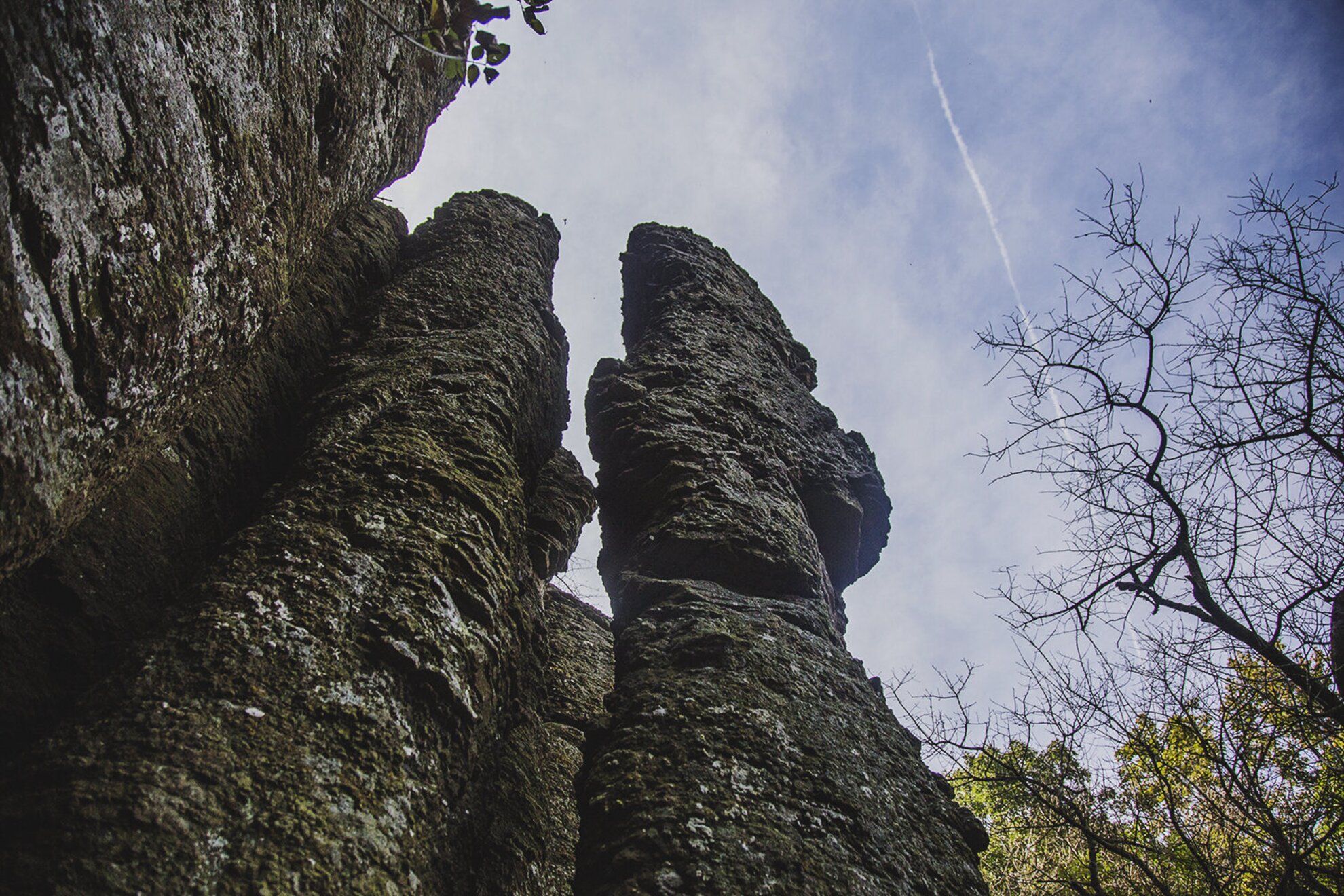
Moving forward, the informational signs of the trail tell us about the flora and fauna. A typical species of Szent György Hill and its region is the saga pedo, but longhorn beetles and lesser stag beetles are also frequent here, in addition to the rich butterfly population. When the sun warms up the basalt rocks, we can run into the famous Pannonian lizard or the legless lizard. The latter looks more like a snake at first glance, as it has no leg. Bats also like this area, and if we are lucky, we might bump into dormice and squirrels jumping on the trees above our heads.
From among the plants, the most beautiful ones are probably the ferns that really like this area due to the sunlit basalt stones, and the unique air and soil conditions.
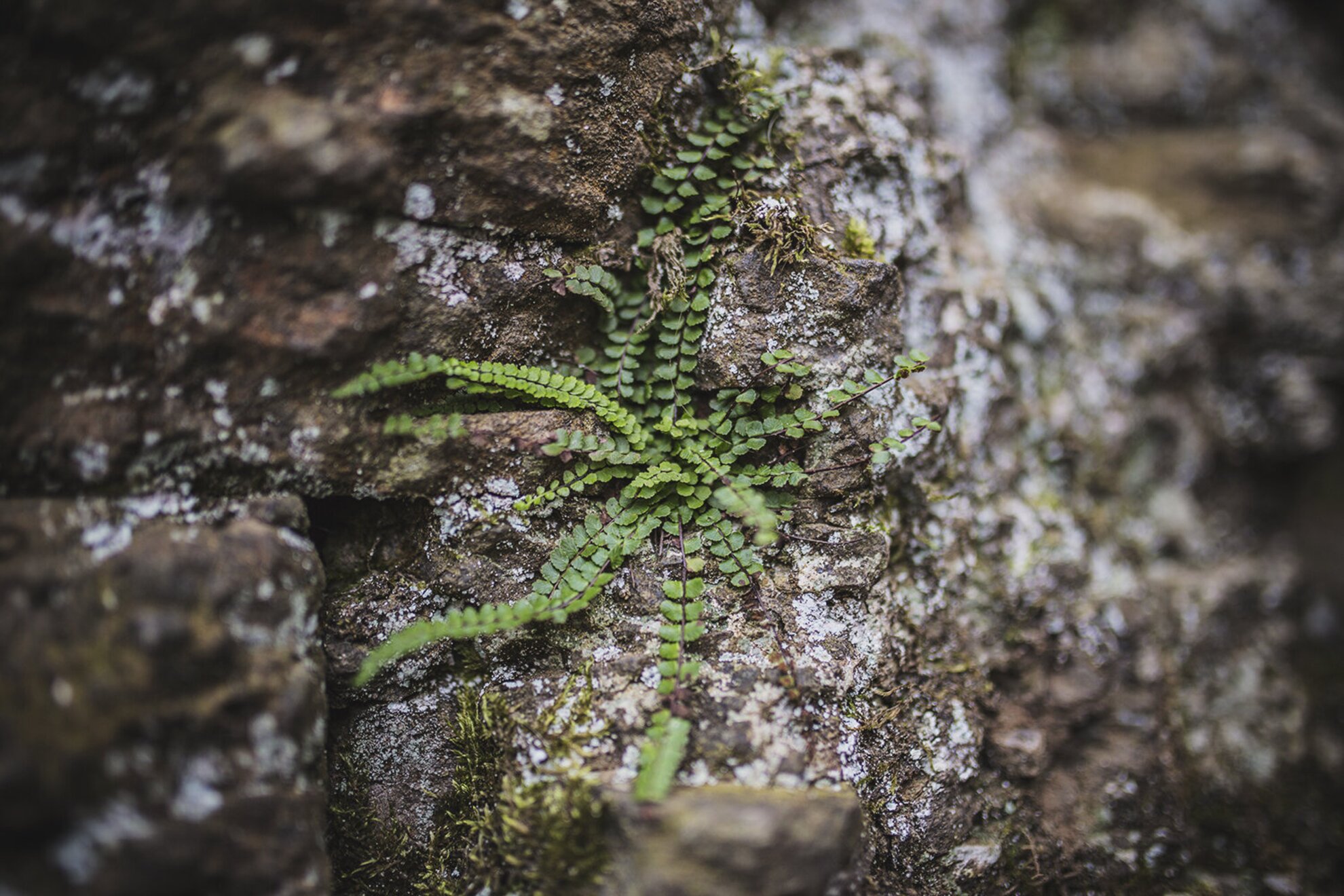
If you take this route, you’ll see many of this hornbeam, oak, and wild blackberry lined trails while getting to the peak.
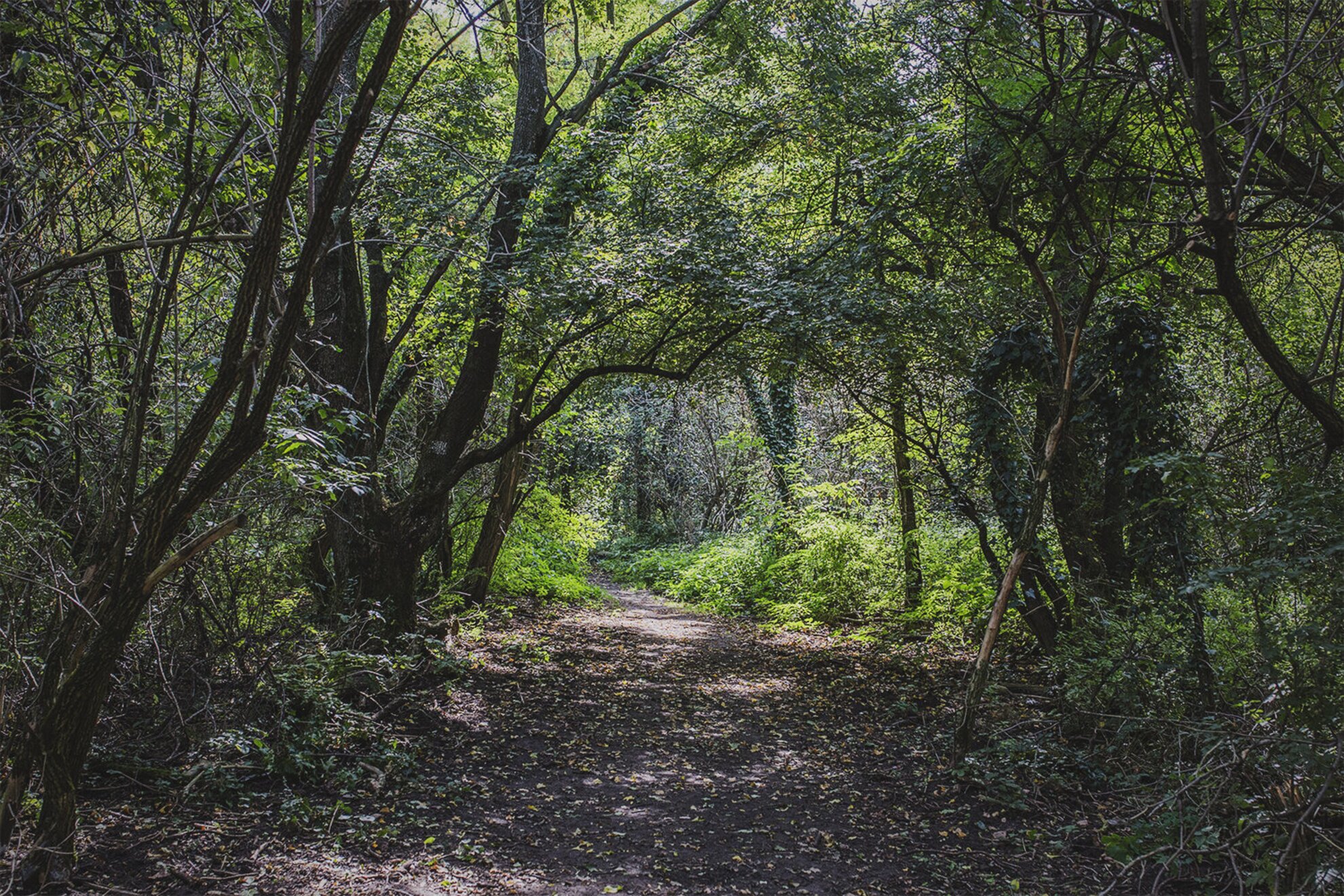
The second station is the ice cave of the hill, which is not a real cave. It’s not the traditional, large hall carved into the rocks, but only a 10 meters deep cavern which was formed when pieces from former basalt columns fell down and created a hole. Interestingly enough, cool air is flowing from among the rocks even during the summer heat. The locals call it Sárkánybarlang, or Dragon Cave, as according to popular belief, the hill was inhabited by a dragon, which was killed by Saint George himself.
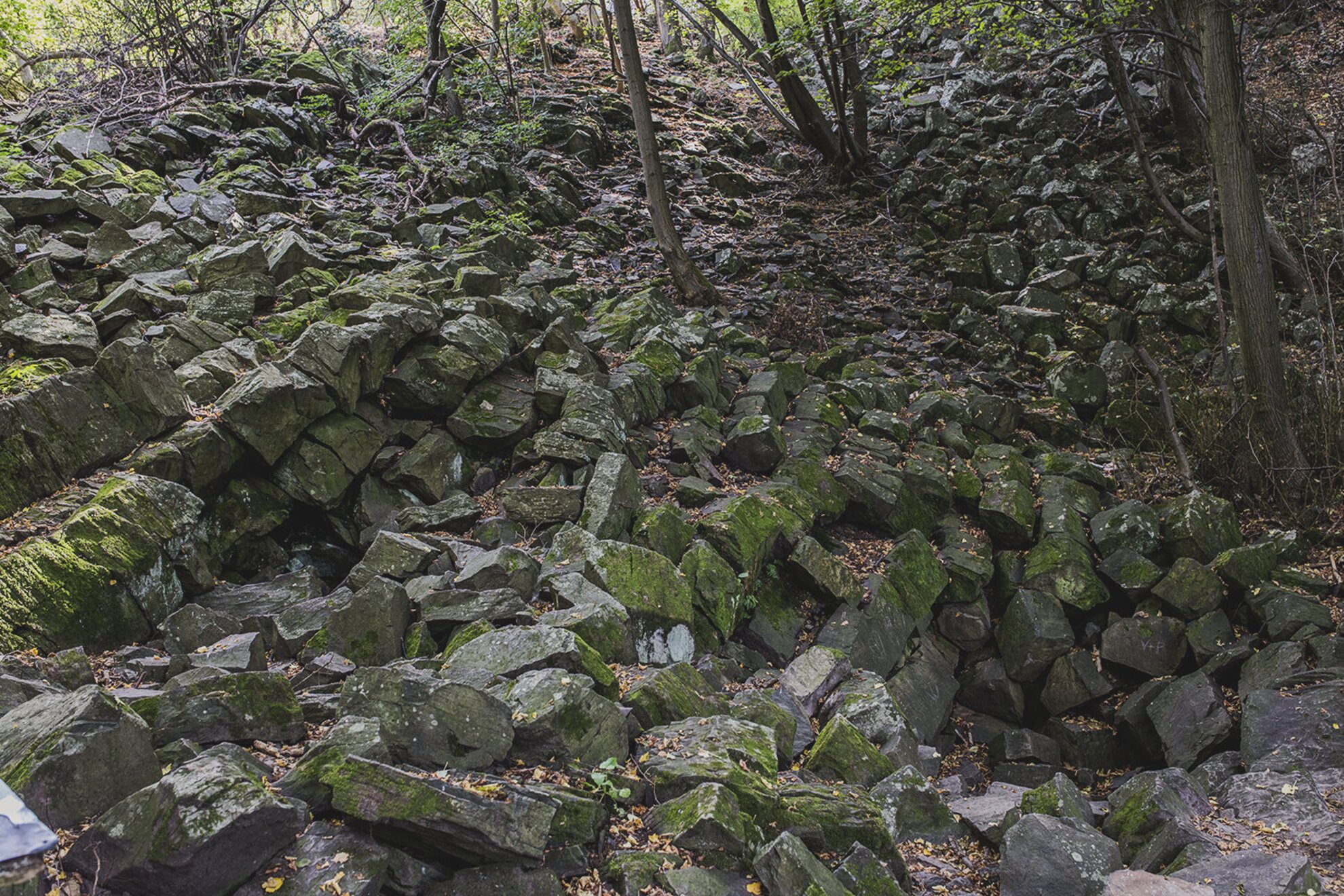
The Szent György Hill tourist hut is directly below the basalt organs, nowadays it operates as a guest house.
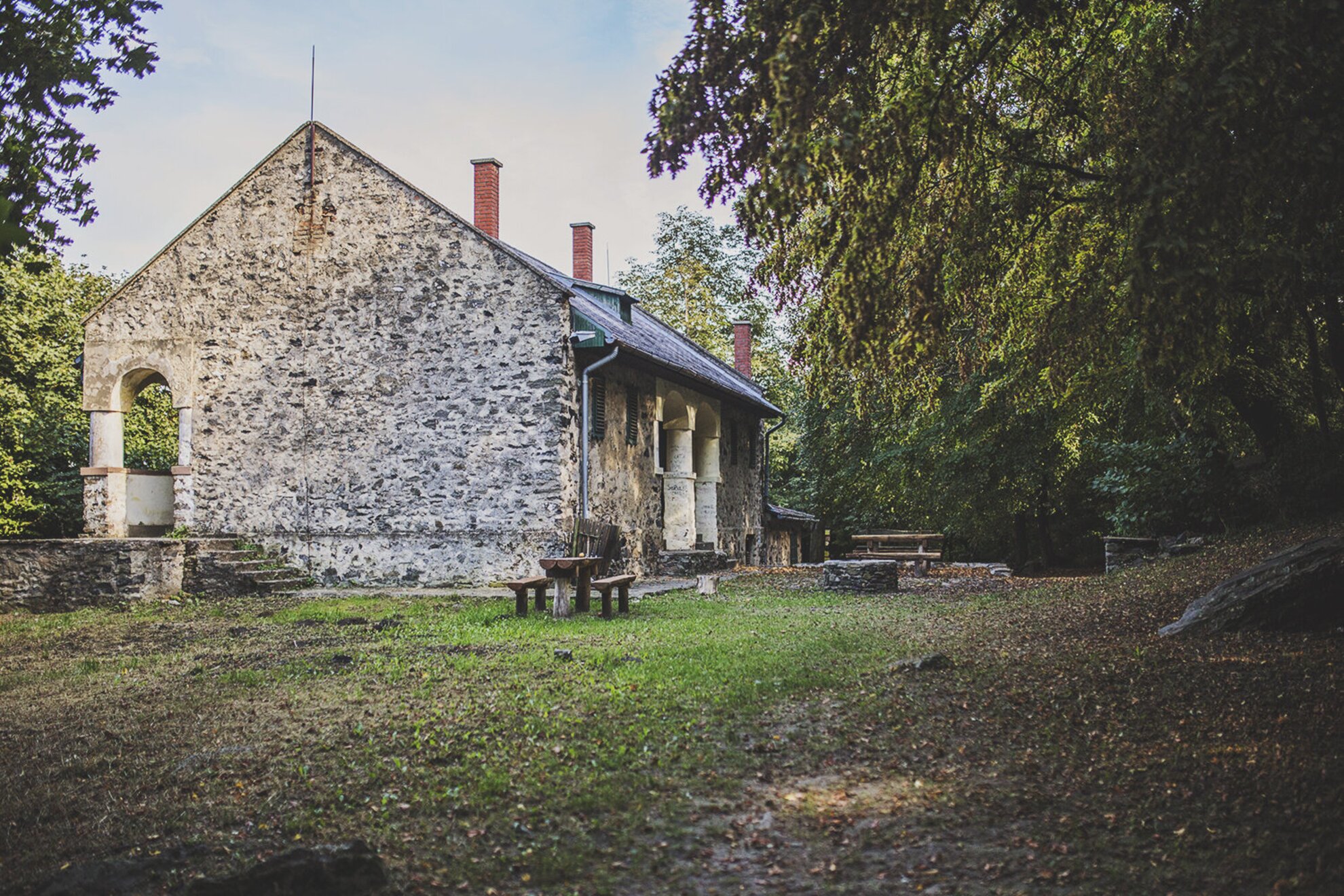
Steps make the way to the peak a bit easier at multiple spots on the way up.
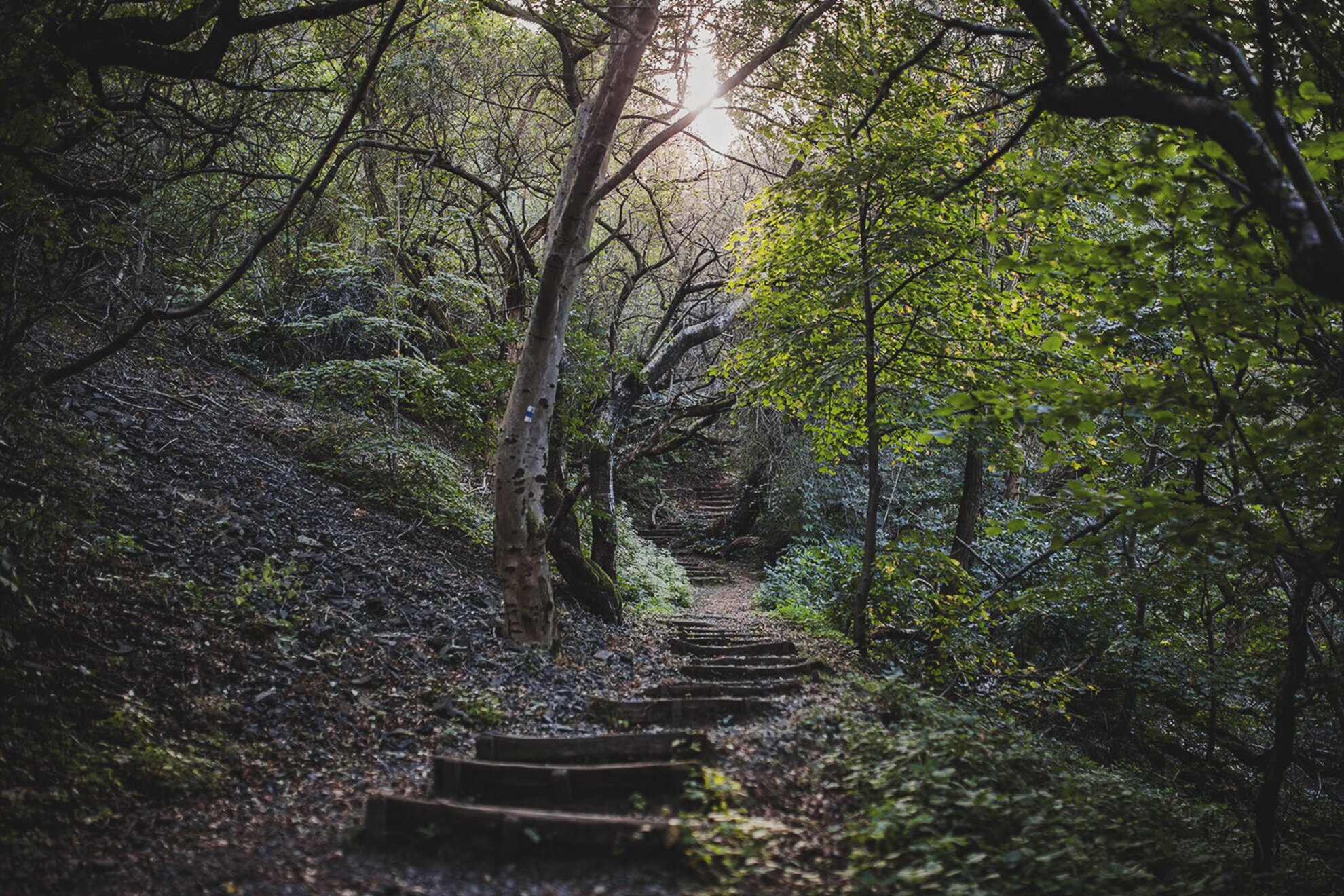
If you would leave your picnic-basket at home by accident, you would miss having lunch at a place like this.
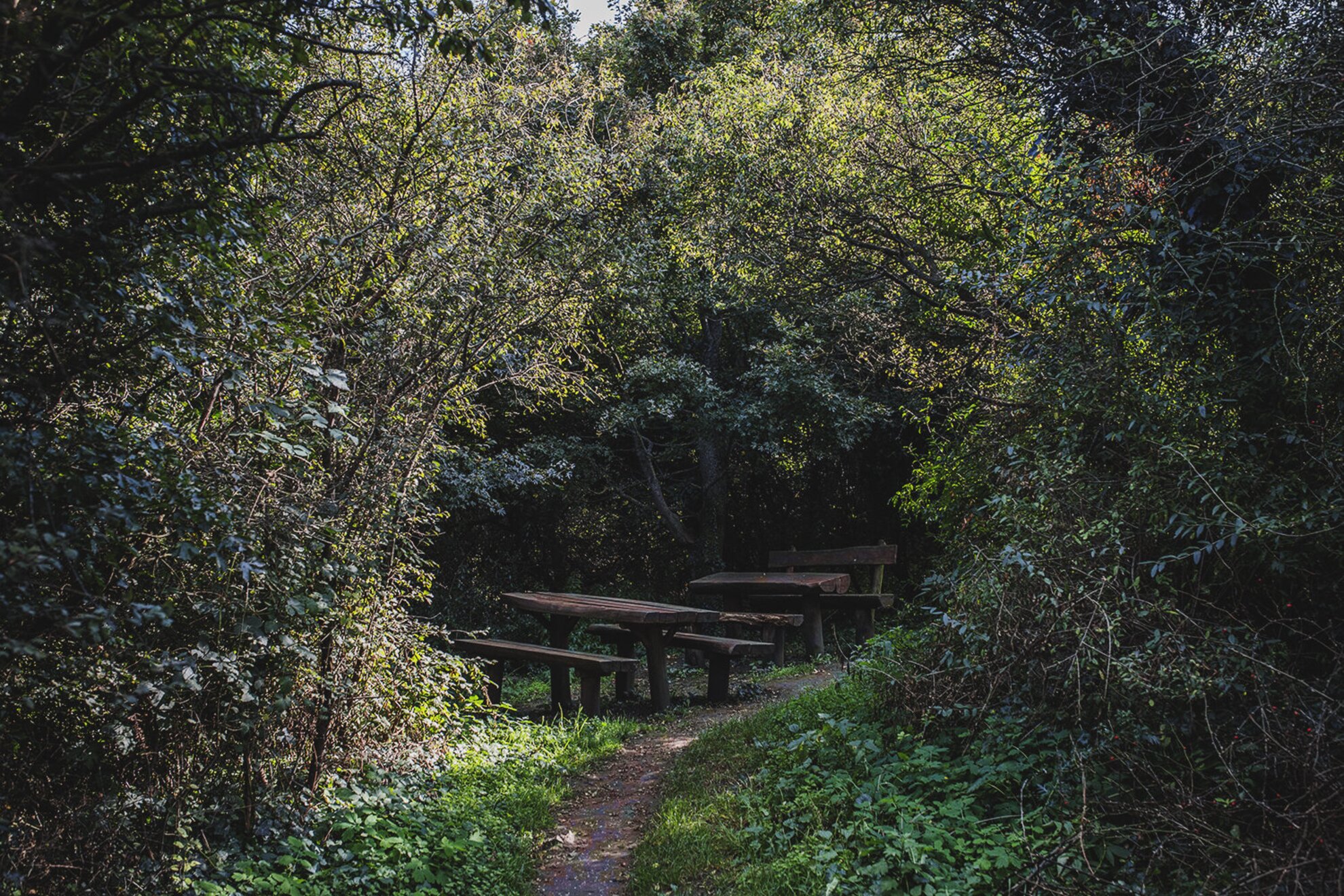
And this is the view from the top, which is also the ultimate proof that it pays off to put on your tour boots.
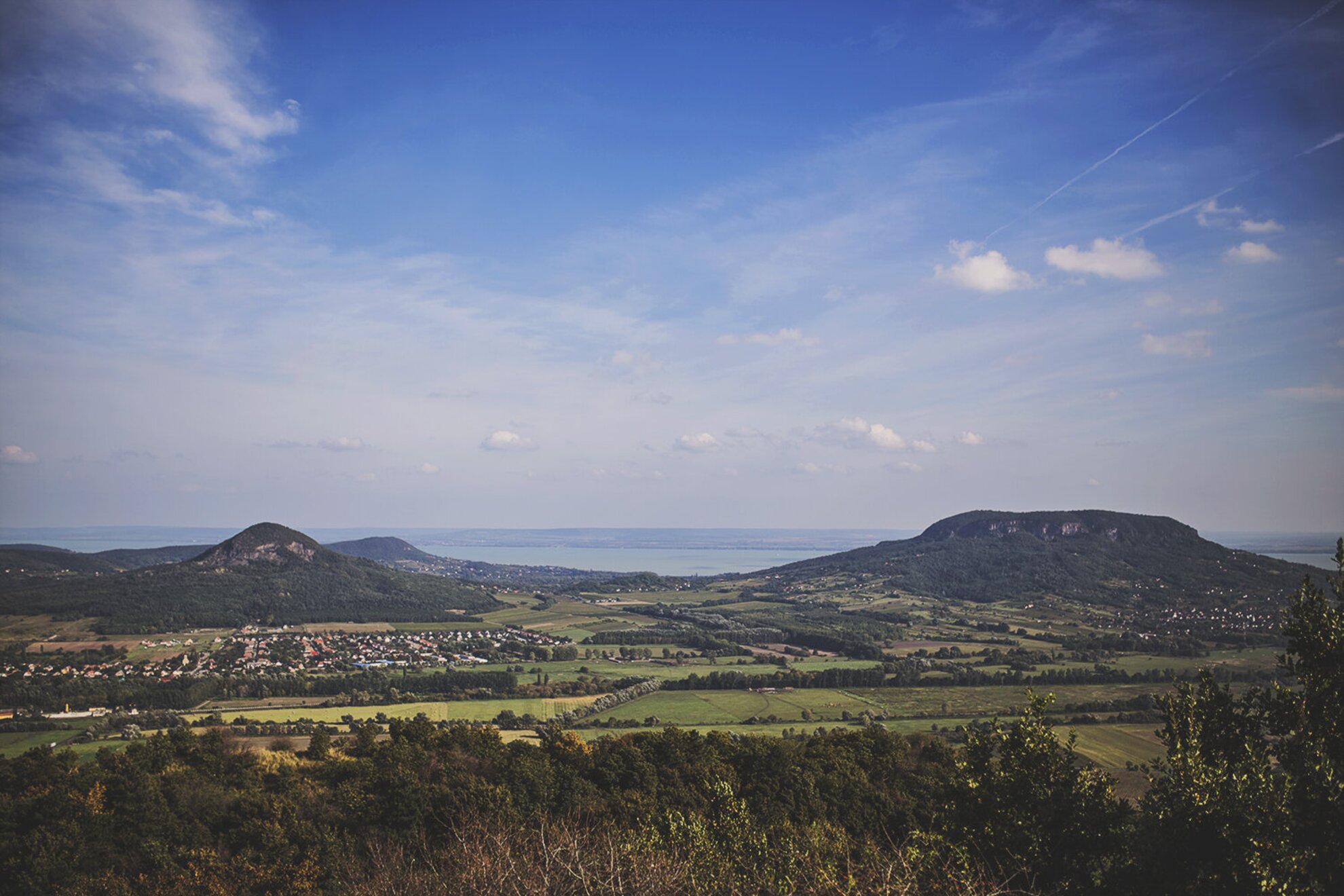
Wandering around Szent György Hill, we can also admire the orthodox chapel that was originally Father Márton’s press house. For now, he’s the only one living at Örömhírvétel, as he named it, but if anyone else would join, it would be a monastery. Father Márton is a stone carver, sculptor, and a sort of a 21st century hermit, who, many years ago, participated in the renewal of Louvre. Officially the chapel isn’t available for visitors, but from what we saw so far, if Father Márton is at home, he’ll surely show the inside of the orthodox architectural wonder for visitors.
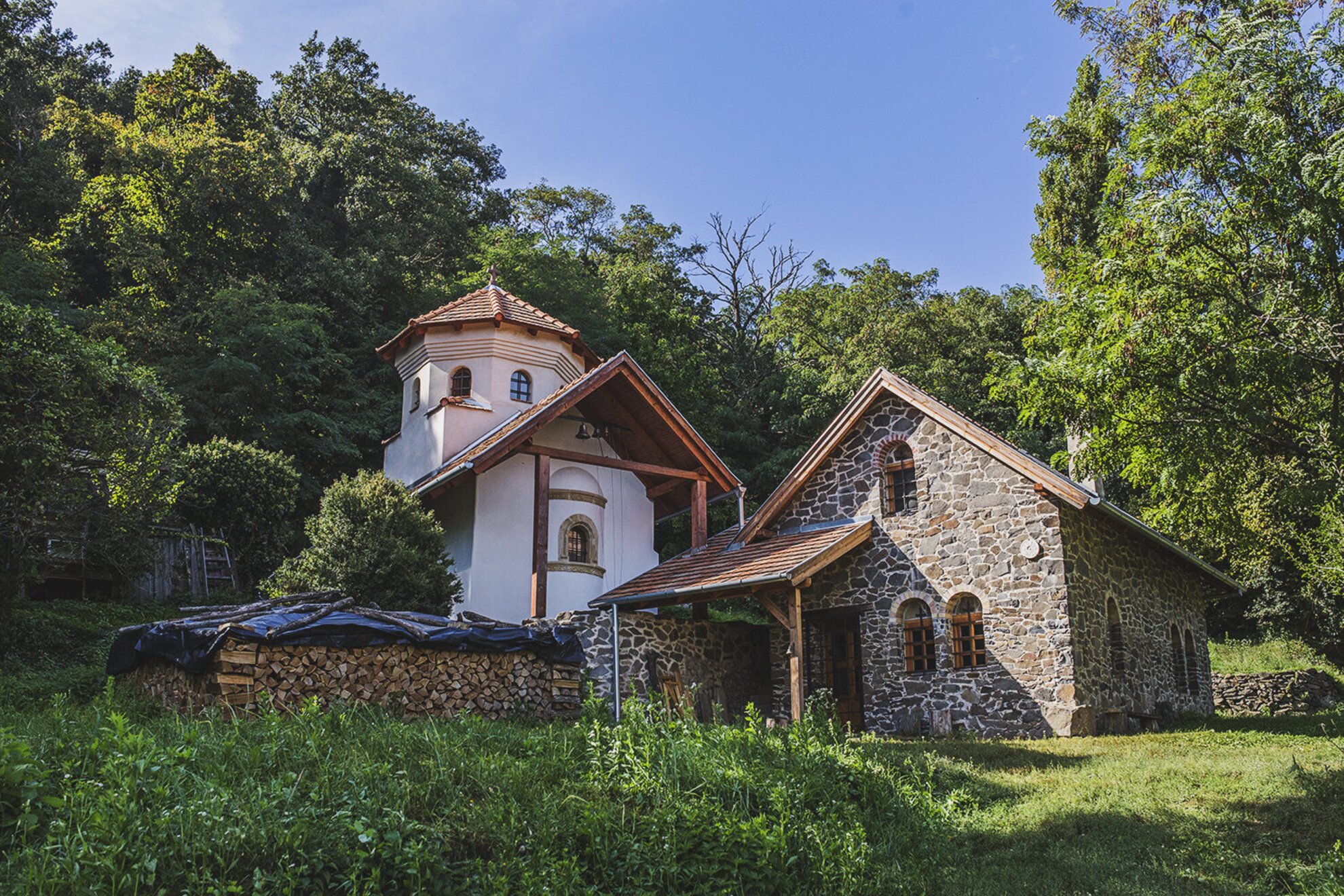
Emmaus Chapel is less friendly, no wonder they often call it the most horrifying building of the Balaton. It was built in the 1950s by Lajos Ify, the former parish priest of Fonyód, who lived here as a hermit, made harmoniums, collected and tinkered clocks, and welcomed pilgrims.
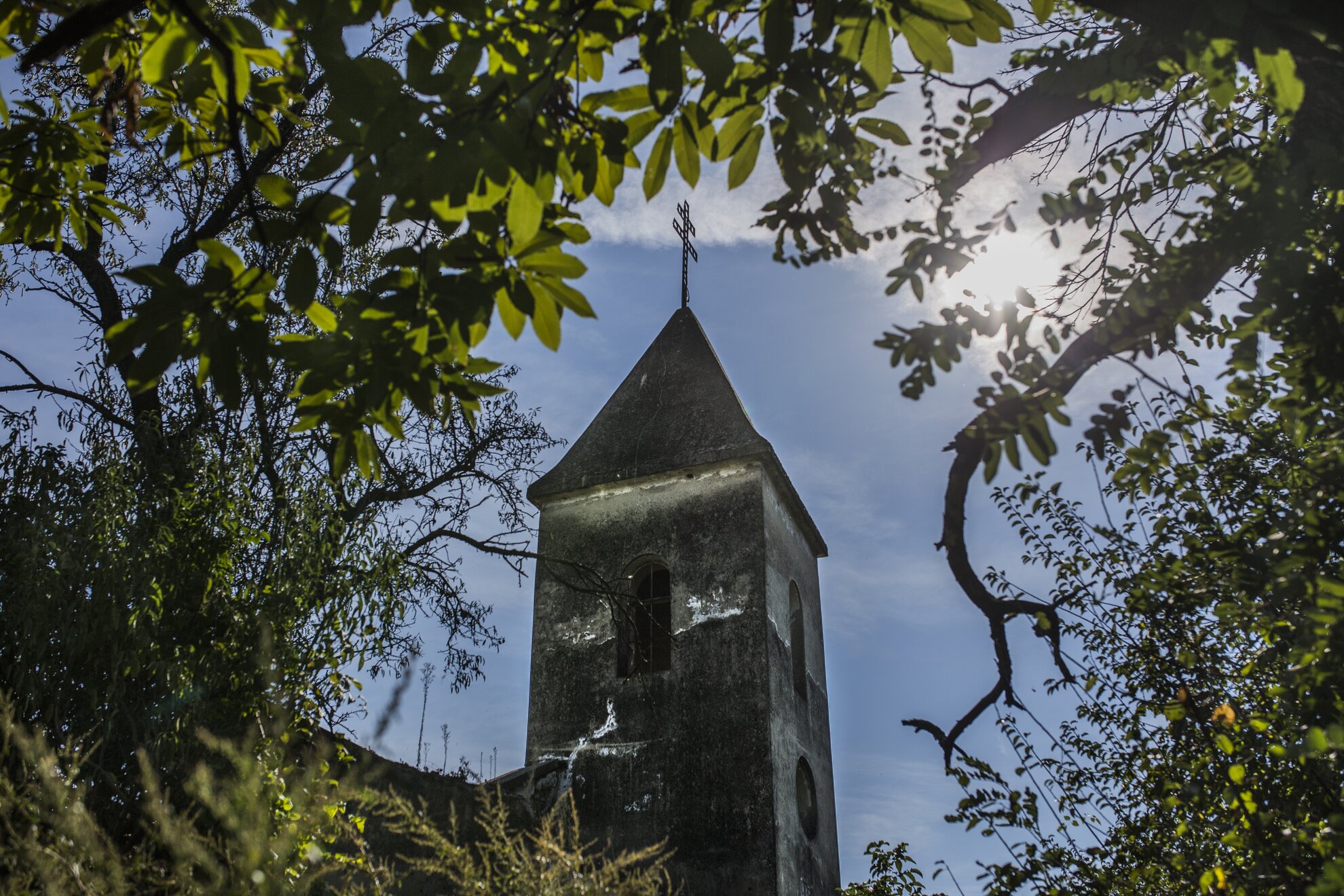
Following his death in 1967, the chapel started to decay. Nowadays it’s almost inaccessible due to the lush greenery and the accumulated garbage, so a Facebook-group named Összefogás az Ify kápolna megmentéséért (“Let’s save chapel Ify”) was created in order to save it.
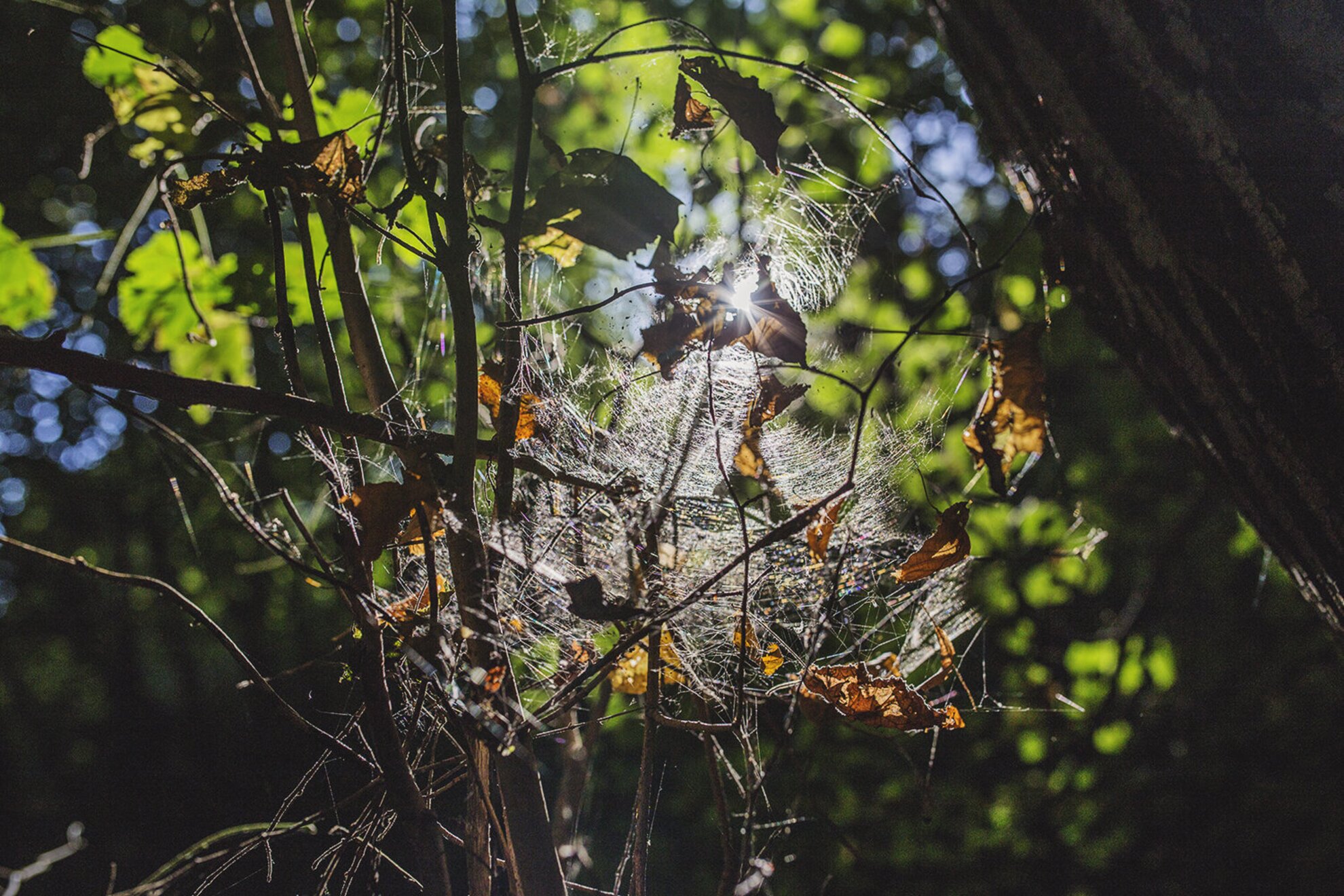
Lajos Ify died here, on the hill, his shrine is next to his chapel, and he himself carved the words „Ludovici memento mori” into it. These words, “Lajos, remember the death!” stand there as admonition to himself and to those who come here.
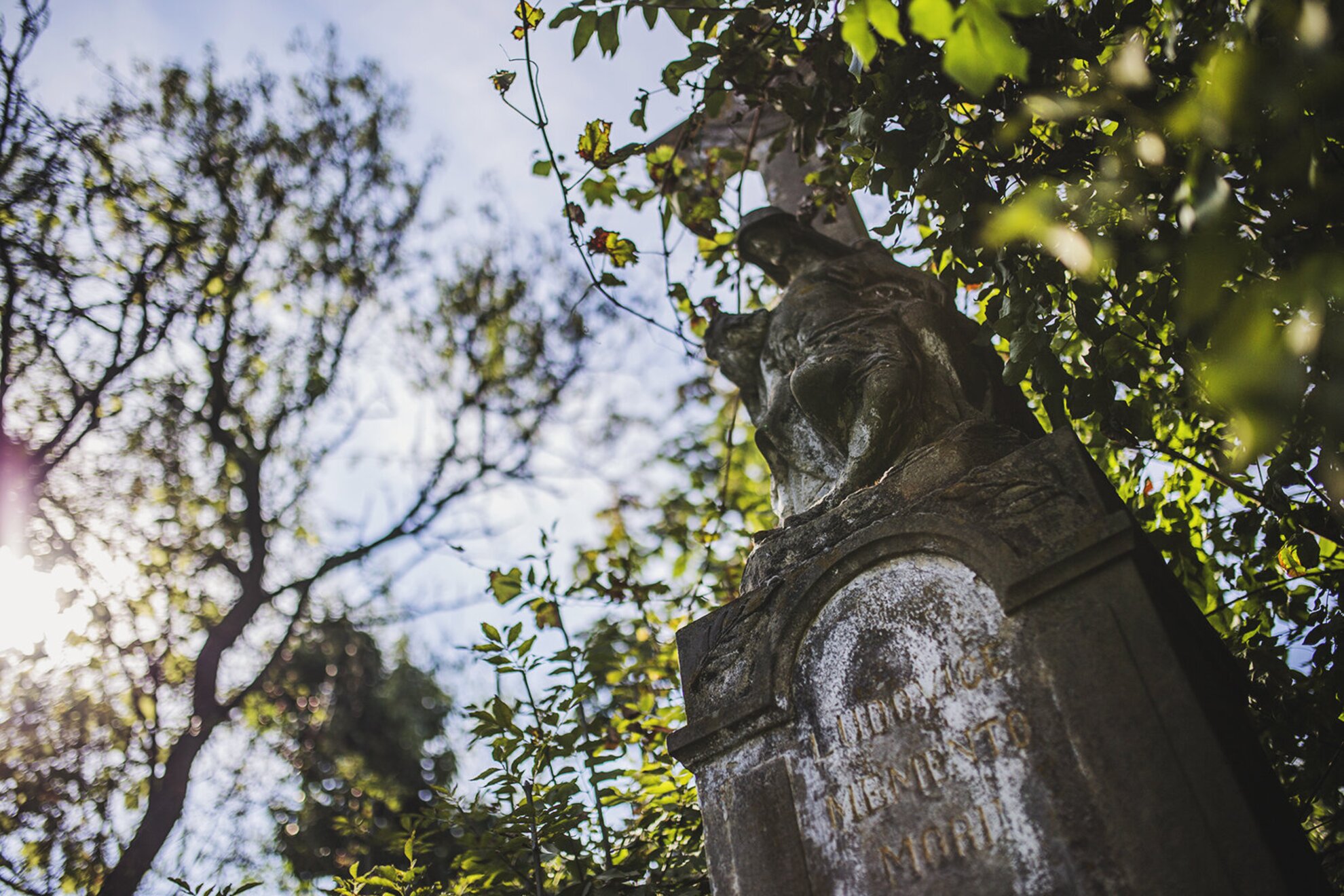
Another sight here is Lengyel Chapel – built in the 28th century, it is often called the most beautiful memory Baroque-era.
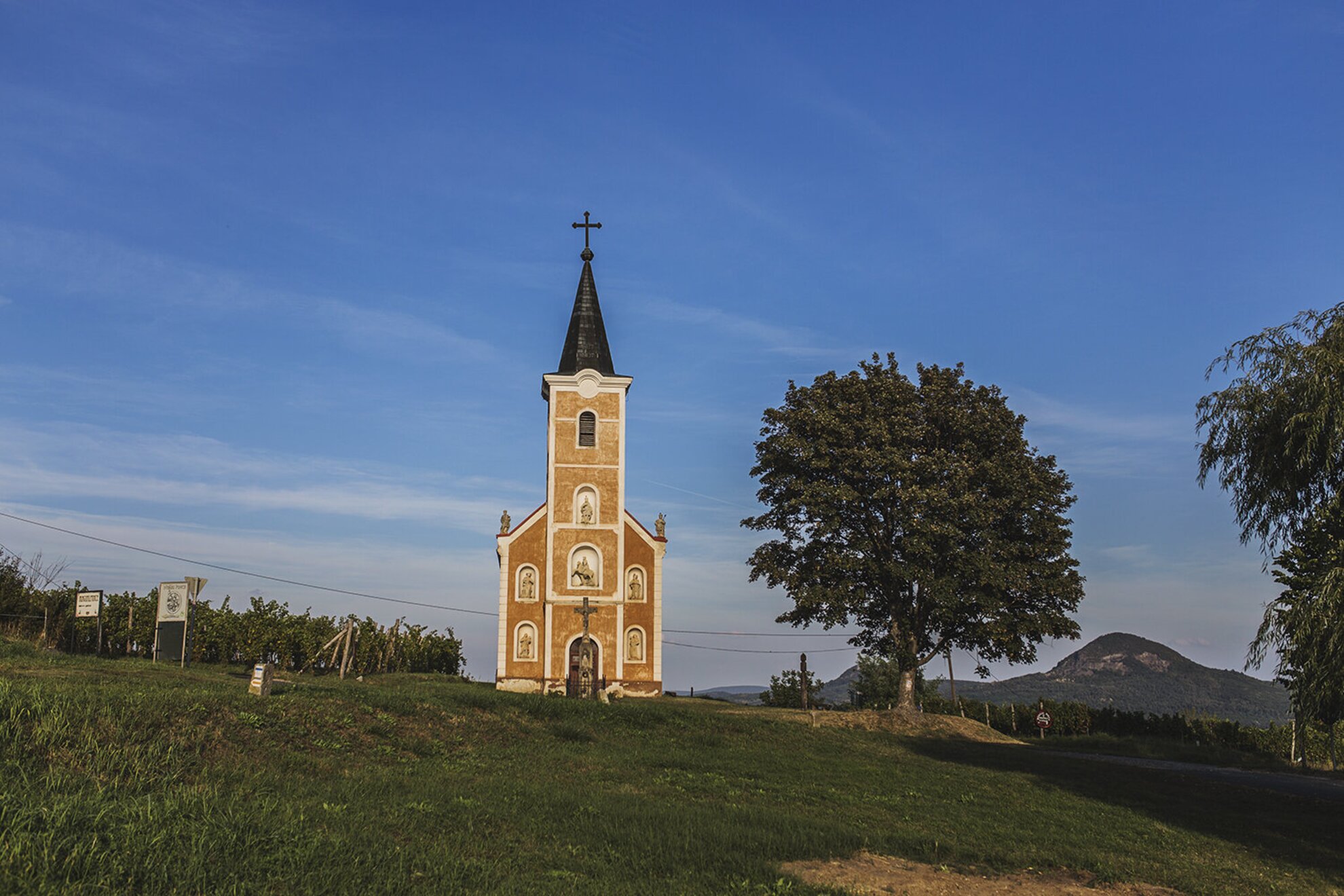
If we keep going west from here on the narrow vineyard asphalt, we’ll stumble upon the lion-head fountain, which has a very soft water. The council regularly checks its quality, and if the number of coliform bacteria raises above the number allowed, they put up a “water not suitable for drinking” sign.
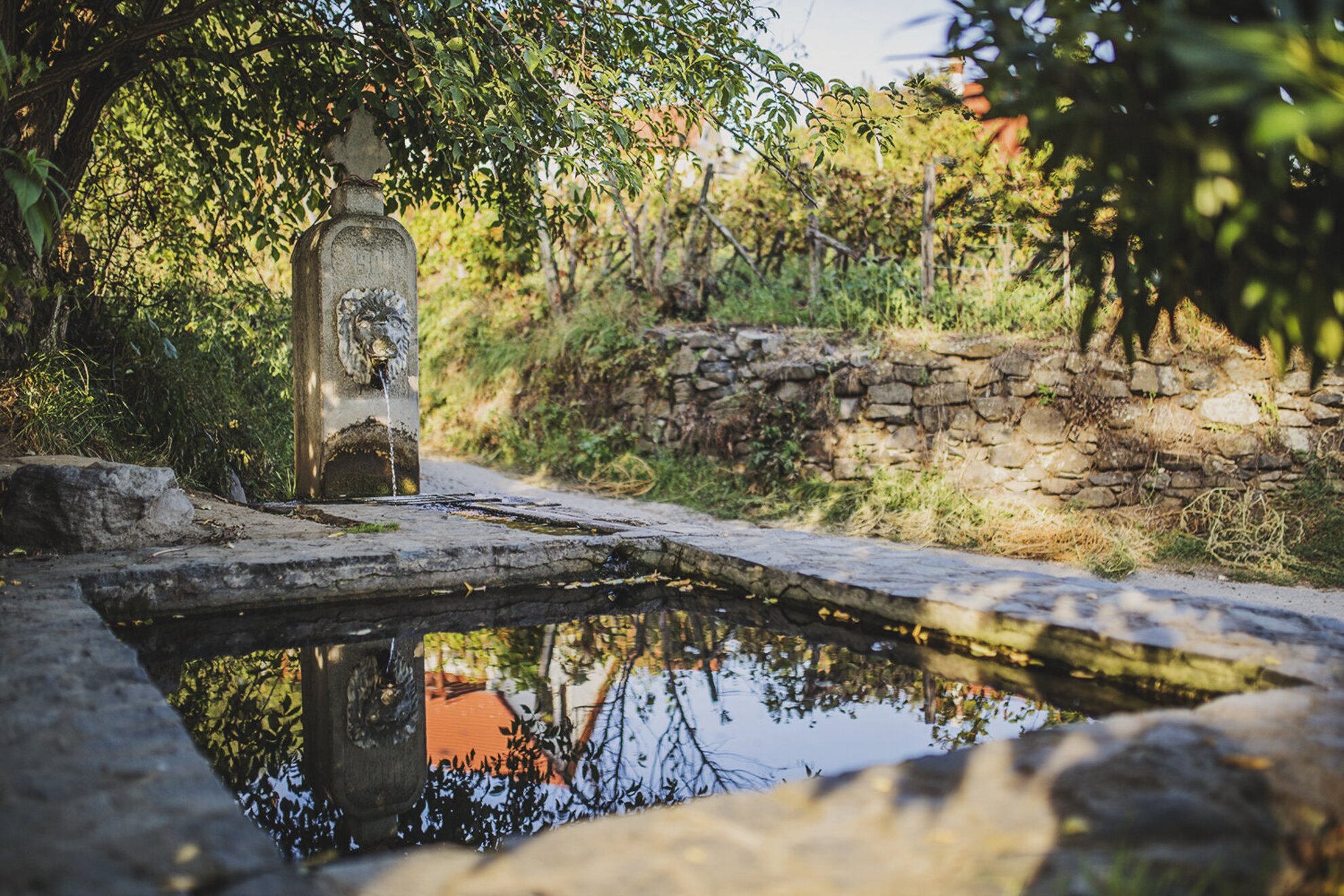
Those who wander around here must stop at Gilvesy Winery and try at least a part of the wine selection while admiring the view. The wines here perfectly represent the entire terroir of Szent György Hill. The area is also a great spot for a wine-tour, as the cellars of Nyári Ödön, the Bencze family, and the Szászi’s are all worth a visit, and at Killer winery, we might even find ourselves in the middle of a wine making process.
